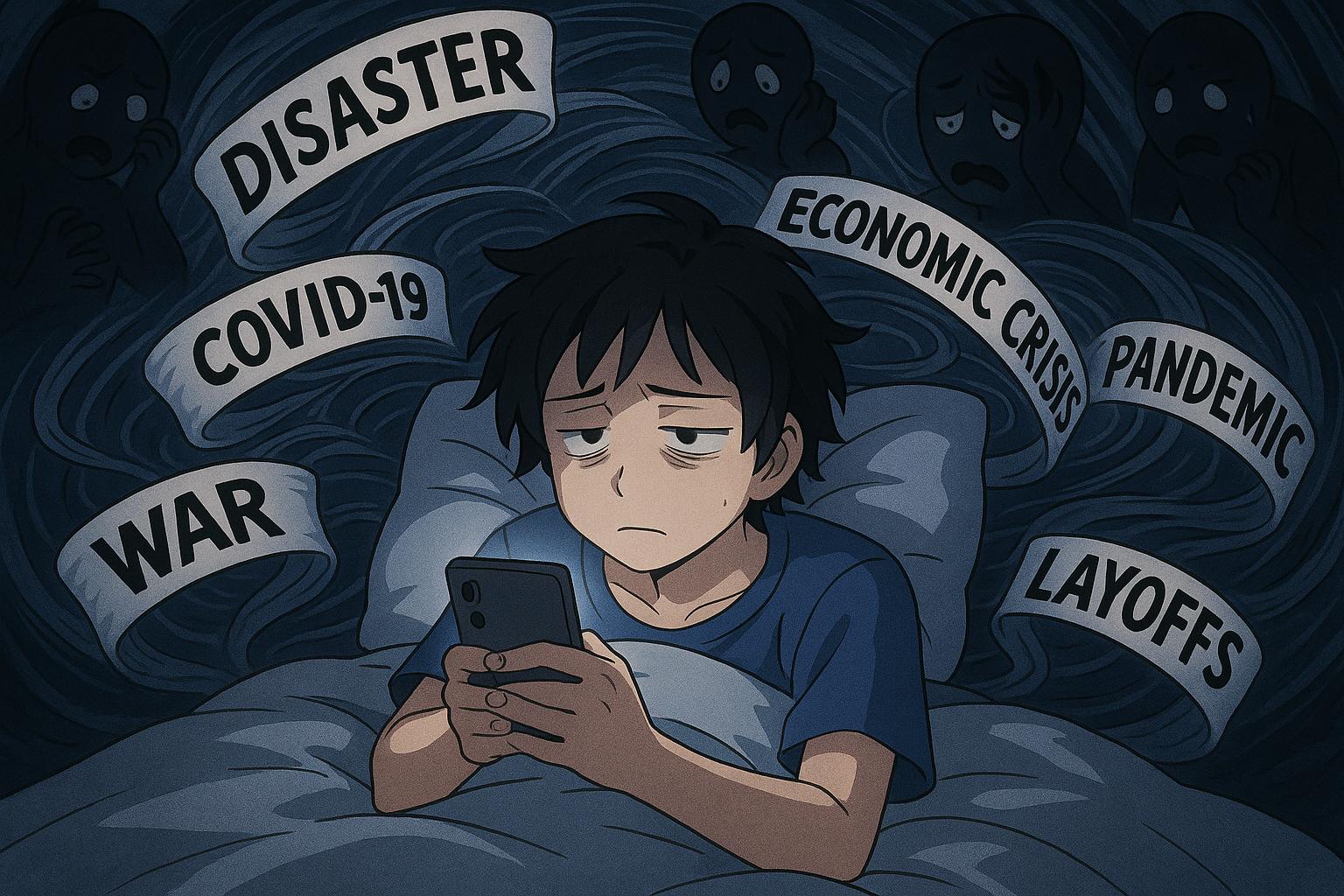What is the first thing you do when you wake up in the morning? For many, the instinctual action is to reach for their phones. This often leads to a familiar routine known as doom scrolling—endlessly scanning a barrage of alarming headlines from news outlets vying for attention with reports ranging from international conflicts and economic turmoil to adverse weather updates.
In a world filled with turmoil, the urge to doom scroll can be overwhelming. Experts warn that this habit can have detrimental effects on our physical and mental health. Dr Aditi Nerurkar, a lecturer in Global Health and Social Medicine at Harvard Medical School, posits that the unrelenting nature of negative news has left us in a perpetual state of stress. “Our brains and bodies are expertly designed to handle short bursts of stress. But over the past several years, the stress just doesn’t seem to end,” she explains. This constant cycle of anxiety is compounded by the way doom scrolling triggers our amygdala—the part of the brain responsible for regulating fear and vigilance—leading us to perpetually hunt for threats in our feeds.
Research reinforces these claims, with a comprehensive review published in Applied Research in Quality of Life suggesting that doom scrolling correlates with poorer mental well-being and reduced satisfaction in life. This aligns with findings from Psychology Today, which highlights the reinforcing nature of such habits, exacerbating feelings of anxiety and depression. Furthermore, the Mayo Clinic Press notes that this behaviour can lead to heightened levels of anger and a pervasive sense of helplessness, both of which can disrupt sleep patterns and impair social interactions.
Beyond doom scrolling, the phenomenon of zombie scrolling also thrives in the digital age. This behaviour is characterised by habitual, mindless scrolling through content without intention or engagement. The distinction lies in the engagement—or lack thereof—with the content consumed, yet both behaviours share roots in a psychological quest for dopamine—the brain's pleasure chemical. As habitual scrollers, we often find ourselves caught in cycles of distraction, using technology to stave off the discomfort of silence or solitude.
Some recent considerations from PCWorld suggest that the continual consumption of negative content risks not just our focus and productivity but may lead to a condition aptly termed "brain rot." The constant influx of brief, emotionally charged stories erodes our capacity for enjoyment in other activities, making it increasingly challenging to seek fulfilment outside the screen.
The impacts on health are not trivial; experts report a spectrum of adverse physical effects from doom and zombie scrolling, including headaches, muscle tension, and even high blood pressure. The cognitive toll is pronounced, as these scrolling habits can significantly hinder one’s ability to concentrate and engage meaningfully with the world around them. Harvard Health has documented complaints ranging from nausea to sleep disturbances, highlighting a pressing need to reassess our relationship with digital news consumption.
However, these realities invite a constructive response. Strategies aimed at reclaiming our time and attention are essential. Dr Catherine Conlon, a public health doctor, suggests establishing digital boundaries to mitigate the adverse effects of scrolling. Recommendations include placing phones out of reach during the night and keeping them silenced and stored away during work hours or mealtimes. Switching devices to grayscale can further diminish the stimulus that prompts habitual checking, allowing for a more balanced engagement with technology.
Implementing these changes not only helps to carve out cherished moments for healthier activities—be it walks in the fresh air or genuine interactions with friends—but also empowers individuals to regain control over their digital habits. By thoughtfully moderating our consumption of news and social media, we can create a more mindful relationship with information and, ultimately, enhance our well-being.
In a world rife with negative news, it is up to us to set the pace for our mental and physical health, recognising that while the content may be unavoidable, our engagement with it remains within our control.
Reference Map:
- Paragraph 1 – [1], [2]
- Paragraph 2 – [1], [3], [4]
- Paragraph 3 – [5], [6]
- Paragraph 4 – [1], [7]
- Paragraph 5 – [1], [2], [6]
- Paragraph 6 – [1], [2], [3], [5]
- Paragraph 7 – [1], [4], [7]
Source: Noah Wire Services
